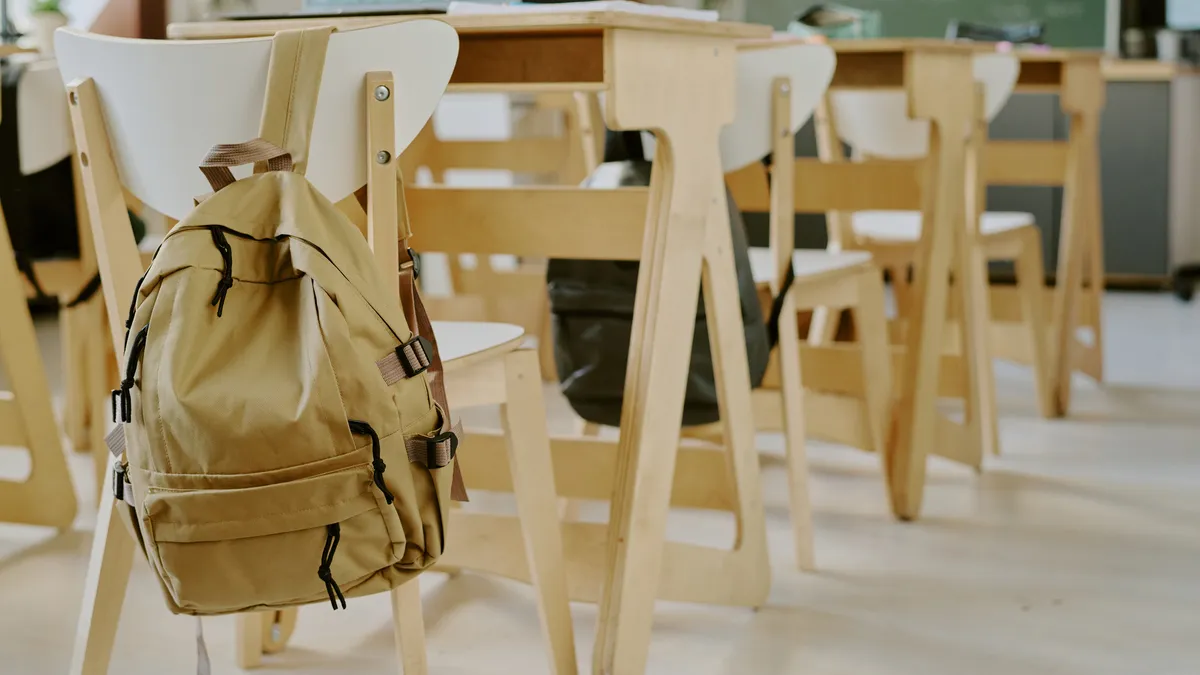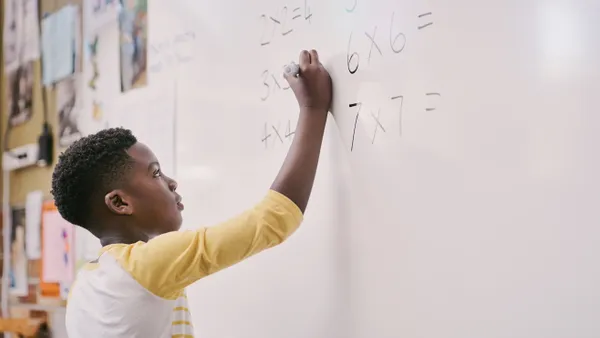With a possible impeachment on the horizon, students are asking questions. While many teachers and administrators may be hesitant to broach such a volatile issue, experts agree it is an important one to raise in the classroom and can help students process current events.
To not raise the subject could even take away from teacher credibility.
For better or worse, President Donald Trump’s potential impeachment is an invaluable teachable moment. That such an event has happened only three times in American history makes it a sort of curricular “solar eclipse,” but how a topic so divisive and partisan is taught can determine whether the result will be pandemonium or a relatively productive classroom discussion.
For teachers and administrators wondering how they can support productive dialogue around the impeachment process, we've gathered some tips from experts.
Ground conversation in facts, but welcome opposing opinions
India Meissel, former president of the National Council of the Social Studies (NCSS), said in her three decades of teaching through the impeachment of former Bill Clinton in 1998-1999 and now the Trump inquiry, she always begins by contextualizing current events for her students.
Begin by tracing current events back to the articles in the U.S. Constitution that permit the democratic process and then refresh students’ memories on relevant figures including presidents Andrew Johnson, Richard Nixon and Clinton, Meissel suggested.
Once the facts are established, teachers can open the discussion to allow for opinion. While some may hesitate to do this, multiple education experts say deeper instruction around this topic will inevitably lead to opinion sharing — an exercise in both civil discourse and of key social-emotional skills.
“You want to help students share their opinions with each other so they’re learning to have an actual discussion,” said Paula McAvoy, an assistant professor at North Carolina State University in social studies education who has also done research on teaching and learning about controversial issues.
However, Patrick Gainey, a civics teacher at South Dakota’s Spearfish High School, pointed out he requires every opinion in his classroom to be supported by facts.
“There’s just so much rumor and innuendos swirling around this topic,” Gainey said, “so if a kid says something in class, I usually ask them, ‘Where did you hear that and where did you get that information?’”
Gainey said while students may never come to agree, “at least [they’ll] be mature enough to embrace an opposing idea.”
Fernando Reimers, a professor from the Harvard Graduate School of Education whose areas of expertise include curriculum development around civic participation, believes this can also be an opportunity to teach empathy and the self-monitoring of emotions as students listen to one another, as well as a time when teachers can encourage students to develop their own opinions.
Balance views and acknowledge bias of materials
Because much of the material on Trump’s impeachment inquiry is based on current affairs rather than textbook materials, teachers may find themselves sifting through information online. Along with charged headlines and opinion pieces, even reporting from credible news outlets can be imparted with a right- or left-leaning spin.
Instead of ignoring or avoiding the bias, Gainey said, it should be welcomed in the classroom as another teaching opportunity. “You have to teach kids how to be discerners of fact — or as much of the fact that they can find,” he said.
Teachers should also be wary of their own bias and introduce materials that embrace opposing views.
“I encourage students to look at several different types of news and outlets,” Meissel said. If you are introducing coverage from Fox News, for example, also be sure to balance it with CNN’s spin on the topic.
Pace and frame the conversation according to your curriculum
Dedicating an entire lesson to the impeachment inquiry or carving out time for debate daily may not be necessary, especially considering that the impeachment process is still in its infancy. While some teachers, especially those instructing on the social sciences or civics, may find value in emphasizing the topic more than others, experts say how much class time is dedicated to the topic can be tailored according to what teachers deem necessary.
Meissel, for example, now begins every class with a warm-up exercise that may be related to impeachment and urges her students to follow the news at home, but plans to increase class time dedicated to the topic if impeachment hearings proceed.
No matter how much class time is dedicated to the topic, however, teachers should frame the conversation according to their curriculum, Sigal Ben-Porath, a professor from the University of Pennsylvania Graduate School of Education, said.
“Think about it in civic rather than political or partisan terms,” Ben-Porath noted. “Teachers should see [the topic] as aligned with some of their general objectives for their classes ... rather than thinking about it as an outside topic that is encroaching on their lesson plans.”
The subject can also be tailored to a language arts curriculum or be included in activities around persuasive writing and evidence-based argumentation.
Should you share your own opinion?
Experts say that's a judgment call. While some teachers find value in being upfront about their bias, many teachers prefer to keep their opinions to themselves.
Meissel said while she’s “seen it work both ways,” she prefers to keep her opinions private, pointing to past incidents where students have taken her opinion as the be-all and end-all.
“I would rather them form their own opinions rather than just accept my opinion as being ‘the opinion,’” Meissel pointed out. She has known other teachers to reveal their opinions at the end of the school year, by which point students have formed their own.
Gainey agreed, saying he also avoids disclosing his opinions and sees his role as more of a facilitator or referee.
McAvoy said while students often want to hear their teacher’s views, “that doesn’t mean that they should get to hear it.” “The most important thing,” McAvoy stressed, “is that if you’re sharing a view, is it for the good of the discussion and are you contributing something that helps their learning?”
Seek and give support
In order to teach effectively on this current event, it is important for teachers to take risks while also seeking support from their colleagues and principals. A trusting relationship with school leaders and a collaborative environment that encourages the sharing of best practices is essential.
“Teaching this is difficult and could come at a cost,” Reimers said. “It is important [for teachers] to create communities with their colleagues so that they know they are not alone, that they can reflect and learn, and so that they know that their principals have their backs in case of an angry parent.”
“It all comes down to trust” that a teacher or department won’t “go off the rails,” Meissel agreed.
But what doesn’t work is “an administrator who takes the view of, ‘do whatever you want as long as a parent doesn’t complain,’” McAvoy said. Instead, school leaders should invite discussion between teachers to come to an agreement on how to address the topic as a collective.























